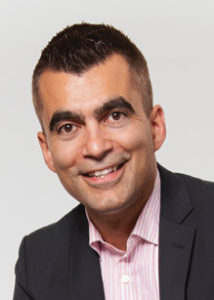Healthcare Agency Roundtable 2016
Management from 2016 Manny Award winners and finalists weigh in on various industry topics presented to them by Med Ad News.
Med Ad News: What do you believe will be the positives and/or negatives for the drug industry after President-elect Donald Trump takes office?
Jay Carter, Senior VP and Director of Business Development, AbelsonTaylor: It’s going to get better. Not because Trump won, or because Hillary lost. Every presidential election year some candidate gets out a bat to pummel our industry. It’s a useful way to look tough to senior citizens, who really care about Rx drug prices.
Jennifer Matthews, Partner, The Bloc: Based on the campaign rhetoric, a Trump presidency likely means a more favorable climate for the pharma industry, primarily because Trump wasn’t advocating for significant reform (as Clinton was). His primary message has been dismantling Obamacare, which is now a credible scenario given the Republican congress; however, it won’t happen overnight. Beyond that and referencing favorability towards increasing Medicaid rebates and re-importation, the reality is that President-elect Trump has offered little in the way of a comprehensive healthcare policy agenda and how his administration will execute against it. Therefore, the real answer is that we simply don’t know what’s in store for the industry.


Scott Baxter, President of Centron Market Access, and Robert Poetsch, MBA, EVP and General Manager of Centron Market Access: The one constant in healthcare is … change. Therefore, this past election is just the latest catalyst that will lead to change. The president-elect is already signaling that he wants to work with Congress to repeal the Affordable Care Act (ACA), also known as Obamacare. However, since enrollment has already begun for 2017, any changes are likely to take effect in 2018.
Repealing the ACA could reduce the number of insured patients. First, it could eliminate the mandate to have insurance. Also, it could allow insurance companies to deny insurance based on pre-existing conditions. Therefore, less insured patients could impact sales of pharmaceutical products.
The president-elect has signaled other changes that could impact pharmaceutical companies. First, he wants to remove barriers for companies that provide safe, reliable and cheaper products. This change could be both a positive and negative. It depends on the pharmaceutical companies and what products they manufacture and how they price them.
Another change would be to reform the FDA and put more emphasis on medical products. Any potential reform to the FDA must be watched carefully. If the proposed reform adds additional hurdles, it could cost the pharmaceutical companies more money to bring products to market.
Since the president-elect’s efforts during 2017 could impact the pharma industry, manufacturers must pay close attention and be prepared to adapt their strategic plans accordingly.
Concentric Health Experience (pictured from left to right: Robin Roberts, General Manager; Ken Begasse, Founder and CEO; Michael Sanzen, Founder and Chief Creative Officer; Adam Cohen, Managing Partner and Executive Creative Director): The macro-economic environment and policy trends continue to favor the pharmaceutical industry and those trends are expected to continue under President-Elect Trump. Much talk was made in the election about healthcare, and in particular, Obamacare. Understandably, in the discourse of debate, strong positions are taken. Once the election is over, cooler heads prevail and common sense comes to the fore. The simple fact is that many Americans have health insurance coverage – coverage that they are happy with. This is the core of the pharmaceutical industry’s commercial success and will remain so under the Trump administration. The President-Elect has indicated that 2 key tenets of Obamacare will remain, regardless of the policy he intends to introduce to replace it – preexisting condition coverage and keeping young adults on their parents plan longer. Both of these tenets are positive for the pharmaceutical industry.
One must bear in mind that in the overall healthcare system, prescription drugs are a small percentage of the overall cost. In most cases, pharmaceutical treatments are the most cost-effective means of providing healthcare, either by improving or maintaining the current health status of the patient or preventing the escalation of health problems requiring more costly treatment interventions such as surgery and in-patient care. This advantage is the reason why pharmaceuticals represent one of the most important assets available for better health management – at the individual patient level and at the population level.
Nina Manasan Greenberg, PhD, Managing Partner, Executive Creative Director, Entrée Health New York: Despite increases in premiums for 2017, 100,000 people rushed to sign up the day after the election. This is one signal of the intense demand for the kinds of offerings available at Healthcare.gov. And it indicates that consumers will be watching very closely as they weigh benefits vs cost.
On a positive note, we expect to see even more transparency from payers, providers, and manufacturers, with the US following global trends. This may lead to an improvement in the reputation of our industry.

Edie Pargh, Senior Vice President, Group Creative Director, Entrée Health New York: With the election of this new administration, the US healthcare system is likely to experience the most significant upheavals since the creation of Medicare in 1965. It would seem that the new administration is focused on retail-oriented approaches, designed to increase competition and consumer choice. We’re watching several trends very closely, including the expanded use of health savings accounts, and the reimportation of prescription drugs, and health plans being able to offer insurance across state lines. This last, for example, could either make health coverage more affordable, or mimic the conditions (allowing companies to choose their own regulators) that created recent economic crisis.
As well, we expect a massive overhaul – if not total repeal – of the Affordable Care Act and a conversion of the federal funding of Medicaid to block grants to states. Both of these are expected to reduce the number of covered lives in the US, which would in turn reduce healthcare utilization, preventive care, and prescription drug use.
Nancy Beesley, Partner/CSO, HCB+: The positives include a pro-business POTUS that will help pharma and industry out from underneath taxes and more regulations. A republican controlled Congress will mean they have essentially two years to focus on reform. The negatives are similar, with a totally new government leaning right, it is likely that ACA and Obamacare could be repealed or significantly changed which will essentially mean starting over. For some that is good, for other’s not so much. The problem is the uncertainty that comes with a new administration. This one in particular is even more unknown as policy decisions will likely be made differently by a non-political president. Time will tell.
Faruk Capan, CEO, Intouch Solutions (standing, right): While many things are uncertain about the new presidency ahead, the Affordable Care Act will not be left untouched. Payers, providers, and the pharma industry will all certainly be affected, and the more rapidly the changes take place, the more dramatic the repercussions will be. Even before any legislation is altered or proposed, though, the uncertainty itself will have a quelling effect on many aspects of the industry, likely in terms of innovative partnerships.
Peter Weissberg, Group Director, Market Access, Intouch Solutions: Regardless of the party in office, the drug industry needs more certainty about the rules and regulations within which it needs to operate, before it can truly return to being a growth engine for the U.S. economy. The specifics of the next iteration of the Affordable Care Act will be the true bellwether of whether the Trump administration will be a net positive or net negative for the drug industry. The devil will be in the details, and therefore our industry will likely continue to be in a period of uncertainty well into the next administration.
Bob Palmer, EVP, Digital Innovation Officer, JUICE Pharma Worldwide: Now that the election is over and Trump is President-elect, it’s worth noting that pharmaceutical stocks rose sharply as manufacturers anticipated a less regulated and restrictive environment. Also, with a conservative judge added to the Supreme Court the probability of restrictions on DTC advertising is considerably reduced; conservatives have taken a position of favoring First Amendment rights for commercial entities (e.g., Citizens United). However, there are some clouds on the horizon. Trump has endorsed the Republican “Blueprint on Tax Reform,” which calls for eliminating the deductibility of marketing costs for pharmaceutical companies. Trump also favors direct negotiation of government drug purchases and re-importation of cheaper drugs from abroad. The repeal and replacement of Obamacare could mean fewer scripts.
Amar Urhekar, President, McCann Health Americas: It’s too early to say how any changes to the Affordable Care Act, if there are any, might play out. Some aspects of a Trump presidency are positive and fewer regulations could benefit our clients.
At McCann Health, we’ve been preparing and are ready for any potential changes in the market place. Our core philosophy and customized integrated offering will enable us to help our clients meet whatever marketing challenges lie ahead.
Deborah Lotterman, Chief Creative Officer, precisioneffect: However one may feel about the results of this election (I just recently left the fetal position), it’s clear that the nation has voted for change. It’s just as clear that change is easy to demand and damn hard to implement. Any marketer who has tried to introduce a dramatic innovation that improves care but requires a change in practice knows this well. So I believe “positive” for the industry will be that the wheels will grind slowly. ACA will prove difficult to unravel as no one wants to walk away from the popular (i.e., expensive) provisions. The negative could be the chilling effect this administration may have on the exchange of ideas and the value of evidence-based decision-making. We could see a decline in funding of the basic research that has been so foundational to the advance of precision medicine. It’s difficult to find a silver lining here. Fortunately, we are an industry filled with brilliant, diverse, talented problem solvers.
Med Ad News: It’s been more than a year since the Turing Pharmaceuticals pricing controversy took place. Since then, other notable price hikes have come from the likes of Valeant Pharmaceuticals and Mylan. On the other hand, Allergan’s CEO said he was not on board with unreasonable price hikes for life-saving drugs. Meanwhile, Hillary Clinton during her election campaign had announced a plan to lower drug prices. The plan included potential fines for drug makers making “unjustified” price increases on old drugs and an oversight panel that could import cheaper alternatives from other countries if warranted. How do you see all of this playing out?
Art Chavez, Partner, The Bloc: The call to lower drug prices and to disincentivize “unjustified” price increases both sound very appealing as sound bites. However, the details and implementation realities surrounding these ideas are complex. Taken to their logical end, these proposals would require federal authorities to impose regulations requiring manufacturers to share balance sheet information in order to enable regulators to determine what is justified versus unjustified. While this type of oversight would be viewed as intrusive and highly objectionable to any commercial operation in any sector, the news-making outliers in the pharmaceutical sector have again raised suspicions that this industry is financially abusing its customers. I anticipate that industry self-regulation instead of government-imposed regulation will be the primary solution to this highly visible problem.
As for allowing cheaper medication alternatives from other countries, I believe this idea will also be met with fierce opposition, although this time with historical precedents and principles. The idea of allowing cheap foreign goods into the US as a way to drive down prices runs contrary to the doctrine of protectionism that has been repeatedly employed to protect the interests of domestic businesses and employees. In this case, the counterargument to allowing the “dumping” of cheap foreign products would be underscored by warnings – warranted or not – of quality and safety concerns related to cheaper foreign medications. An alternative, and perhaps a solution to all of the pricing-related issues, is to increase domestic competition by reducing the barriers to entry for new players.

Ashik Desai, Executive Vice President of Business Growth & Analytics, ContextMedia:Health: For anyone who has known someone who has lived with a chronic or threatening condition, or who has lived with one themselves, these treatments and advancements in medicine are not taken for granted. For those who work in the life sciences, there is an understanding that these life-saving advancements are some of the greatest achievements in innovation in modern history.
Setting aside anyone’s political inclinations, what’s at the heart of this effort is a desire to provide patients with pricing that is fair, while ensuring that the life sciences are able to continue to invest in meaningful research and development that saves lives. As a result, it is important to avoid oversimplifying the issue and demonizing the life sciences. On the other hand, it is dangerous to downplay the concerns of patients and payors, who need access to these treatments. I am optimistic we will get there.
Mario Muredda, President, Harrison and Star: This is a tricky one indeed. Independent of partisan politics, the industry as a whole is stuck between a rock and hard place – pharmaceutical companies are businesses that invest heavily in research and development and need to grow and be profitable and generate returns for their shareholders and investors. But many of us simultaneously believe that health is a basic human necessity that, much like shelter and energy, should be protected from unfair swings in prices that could deny people the ability to live and prosper. So our new government needs to find a way to balance these seemingly opposing objectives so that pharmaceutical companies will continue to be encouraged to develop new and innovative products that will drive their growth and prosperity while ensuring that patients are insulated from unsustainable price swings. And this needs to happen in a way that does not create supply shortages, stifle innovation, or shift the burden of research to government and academic institutions. A tall order for any government, but definitely not impossible.
Concentric: Let’s just start by saying that the actions of Turing’s former CEO Martin Shkreli are not representative of the pharmaceutical industry. He is the outlier. While these extreme examples generate headlines and equally vociferous responses, it leaves unanswered the core challenge to the industry – demonstrating value. Our industry is built on helping, healing, and curing, yet that exceptional merit gets lost in the face of sensational headlines. It is incumbent on us, as an industry, to remind our customers of the value we bring.
Our brands don’t just deliver clinical benefits; they deliver human benefits – the ability to engage, to participate, to be relevant, to be needed. These powerful human experiences must be tied to the brand experience. The brand experiences we deliver must be desired, elevating the conversation from price to value. We, as an industry, must step up and deliver valued and desired brand experiences.
It starts with understanding the desires of our customers and how conditions or treatments compromise those desires. If we don’t know or appreciate what our customers desire, how can we provide anything they value? For those whom we help, heal, and cure, we need to demonstrate our value in each and every interaction. When brands deliver experiences through continued engagements that our customers value, we deliver on the desired human experience. When brand experience becomes seamless with the human experience, sensationalist headlines lose their power.
Nancy Beesley: This issue has become a big problem for government and pharma. While I suspect that Trump will act as a traditional conservative, how he will respond to the drug pricing debate is less clear. He has been shown to embrace policies that include Medicare negotiating drug prices, foreign drug support and price transparency. Whether or not he will support legislation on this issue remains a question.
Peter Weissberg: The significant attention being paid to drug pricing may be a blessing in disguise for the pharmaceutical industry. Manufacturers will still seek premium pricing, as is well within their rights in a free market economy. However, the potential reputational risks for premium pricing will demand that the treatments they bring to market truly provide clinical value. Manufacturers will no longer be able to bring “me-too” drugs to market, and will redirect scarce resources toward treatments that truly address the many unmet needs we still face.
Bob Palmer: With the election of Trump, pharmaceutical manufacturers feel they can breathe a little easier – hence the upward move of pharma stocks the day after the election. With Trump and the Republicans being against regulation in general, it’s highly unlikely that fines and oversight panels will be in place. The fact is that the cost of drugs represents only ten percent of the nation’s total healthcare expenditures, so there are plenty of other factors that can be addressed if reason prevails. Ultimately, no matter which political party is in control, pharma has to police itself and practice restraint regarding pricing; the marketplace eventually punishes upward price pressure.
Jay Carter: There will be other organizations that choose to play the price card too hard, and those organizations will endure media and congressional scrutiny. That press will sully the rest of the industry. I don’t see a Republican administration and a Republican Congress choosing to focus upon our industry before other larger and more important topics, like Obamacare, taxation, and building walls.
Med Ad News: DTC drug advertising has been on a growth spurt during the past few years, and the 2016 expenditure may break the all-time record set during 2006. Yet, there remain plenty of industry detractors regarding the lofty amounts of DTC spending and some contend that there are more efficient ways to communicate with consumers rather than via TV spots. What are your thoughts on this subject?
Bruce Rooke | Head of Ideation and Travis Rooke | Ideation, Fingerpaint: While DTC TV spend seems strong in pure dollars, there are relatively few players – and one of them spent 54% of the 2015 top-ten TV total. So while this may be an fascinating media conversation to have when you’re marketing a $1 billion+ product (i.e. the vast majority of top DTC TV spenders), it is but a distant intellectual curiosity for most pharma brands.
That’s not taking anything away from TV. The benefits of mass TV commercials are well-documented. And the buys have become even more efficient and effective through better targeting, with cable spend rising at a faster rate than network. And more the better if you can then integrate your TV into an entire omnichannel campaign. It’s all super wonderful if, and I emphasize if, you have all the stars aligned: the right audience (FYI, the median viewer age for CBS is 59), the right mass-market brand, and the right budget for TV.
So, what about the rest of us?
There is good news. Digital video continues to strengthen for advertisers, especially to audiences 18-49 (the age group that has seen a same-time decrease in traditional TV watching by 25-40%). YouTube on mobile alone reaches more adults 18-49 than any cable network.
Online video ad revenue has doubled over the last three years, while TV has decreased.
And digital video is predicted to make up 69% of all internet traffic in 2017.
But the real good news actually lies in the different nature of healthcare decision-making. Unlike many other consumer categories, a healthcare purchase is active, focused, and heavily-researched. And the web is where people go first. According to the Pew Internet & American Life Project, 80% of people went online to look up healthcare information in 2015, and 47% of those looked for a drug or a treatment. Which means consumers are actively engaged – with a consideration mindset – when they come across your product message. Contrast that dynamic to the mass DTC TV pitch, which is based on interruption, stopping someone who wasn’t actively looking for healthcare information to consider your brand. The unique healthcare decision-making dynamic enables digital communication vehicles, like search, content marketing, and native advertising (which is woefully underutilized in pharma) to intersect people with news they can use, and lead them to your solution in just a couple of clicks. One study showed that when in-stream mobile native ads were combined with paid mobile search, brands saw a 279% lift in top-of-mind awareness (Yahoo). Mobile native ads have also been found to go beyond awareness to increase purchase intent. (Sponsored native content on Pinterest, for example, has been shown to drive up daily in-store purchases by 53%.)
So, as the saying goes, if you can’t be rich, be smart. Or at least good-looking.
Lori Grant, President, Klick Health: Our goal with DTC is patient empowerment. We use advanced analytics to create an optimized and fully integrated omni-channel media mix that engages the right patient with the right information at the right time. Whether that mix includes broadcast, digital, and offline tactics depends on the patient audience, budget, and types of support our clients provide. Throughout the process we ensure cost-efficiency and maximized engagement by thinking strategically and grounding our decisions in data. And by working with innovative partners, such as Crossix, we provide our clients unprecedented ROI metrics and opportunities to further optimize their investments.
Concentric: Setting aside whether the First Amendment makes DTC protected speech or not, industry detractors are not questioning DTC on the basis of efficiency. They are questioning DTC itself, and want to return to the good old days of “doctor knows best.” That view is paternalistic, parochial, and firmly in the past.
With more of the responsibility for personal health management increasingly falling on the patient, why would we ever deny meaningful and helpful information to patients? In most cases, patients are the best advocates of their own healthcare management if they can be informed, educated, and activated. Creating awareness and understanding with consumers of underdiagnosed/misdiagnosed conditions generates the urgency to know more and to act. Instilling that urgency to act can mean the difference between detecting and dying. For example, ensuring those at risk of colon cancer receive a colonoscopy can reduce the chance of dying from it by 90%.
Health is a personal experience. Managing one’s health is also a personal experience. To be an effective manager, one must be informed and equipped with the right information, tools, and access to care to make the best decisions. Denying that access does not advance personal or public health interests.
Ashik Desai: For brand awareness and quantity of impressions, there is still value in the TV spot. That said, there are other channels that are a more effective marketing spend, but with increased accuracy.
In order to understand the recent increase in DTC advertising, you have to take a look at the decreased access that sales teams from the life sciences are experiencing in their attempts to reach physicians. Today, according to ZS Associates, only 44% of physicians are considered accessible, meaning they met with at least 70% of the reps that reached out to them. This is down from about 80% in 2008. In response to this reduced access, brands are looking for other ways to drive success, both through non-personal promotion and increased DTC spending.
By leveraging new digital technologies, marketers can reap the advantages of the TV spot such as reach, brand recognition, low risk and cost, while minimizing the challenges of targeting and convincingly tracking a return on investment. By leveraging decision technology that is available in the consultation room, brands access cable TV-sized scale but with a higher impact on the patient and an increased ability to improve ROI. This efficiency is the reason point-of-care spend increases year over year at a rate that vastly exceeds alternative DTC channels.
Bob Palmer: It may well play out that DTC advertising moves away from TV and into more discreet channels such as digital. This would reduce the focus on DTC advertising by virtue of it being less visible to the average citizen. For example, programmatic media buying – which is slowly but surely being adopted by pharma marketers – has dramatically increased the ability to target patients online in a discreet manner. However, FDA efforts to restrict DTC are a distinct possibility, such as further lengthening the period of time before a brand can advertise after FDA approval of a drug.
Amar Urhekar: Direct-to-consumer advertising is (and has been) an essential component of consumer engagement and of empowering consumers to take responsibility for their healthcare. While there are many efficient ways to communicate with consumers other than TV spots, TV remains an effective method of creating initial awareness for certain brands. Media selection depends a great deal on the total size of the market for a particular drug and how effective other, more targeted digital mediums can be.
When a drug brand has a very wide patient population base, TV is still the most effective way to reach a mass audience in order to establish awareness than more targeted forms of digital media. Individual media tactics no longer can be considered a direct path to a customer engagement. There always will be a role for TV, however the migration of drug promotion from TV to less expensive, more targeted digital/mobile channels will continue.
Deborah Lotterman: There are infinite ways to reach consumers. But if that touch is to be successful in informing and motivating action, it needs to occur where and when the recipient is most receptive. If we’re trying to reach teens, inexpensive channels like Snapchat and Instagram make a lot of sense. But the vast majority of branded products treat the chronic and catastrophic diseases that accompany aging. And while the digital and social use of those over 50 continues to grow exponentially, many remain heavy consumers of TV. DTC still works. Smart marketers continually develop and test other vehicles and channels to cement engagement, but TV persists a power tool to spur many who will benefit from better care. We’ve seen this recently with a broadcast spot that prompts adults over 50 to screen for colorectal cancer with Cologuard, a non-invasive home test.
Jay Carter: There are definitely more efficient ways to reach consumers than TV spots. The key, however, remains a medium’s ability to deliver frequent messages to target consumers. If the target is a 55+ adult (as it is for most of our industry’s brands), the best way to achieve adequate frequency of messaging is with broadcast TV. Note that Internet promotion for pharma has grown dramatically as well.
Art Chavez: This question seems to set up the premise that in order to communicate with consumers, you can either choose broadcast or nonbroadcast approaches. My sense is that there is no example of a broadcast approach that is not supplemented and complemented by messaging through digital channels, earned media, etc. The choice to utilize broad-reaching channels within the overall media mix is based on detailed analyses of cost-effectiveness as well as consumer channel preferences. In this sense, advertisers aren’t driving the choice of communications media; the consumer is. When consumers stop responding to broadcast, then the same investment analytics employed today will drive advertisers to prioritize other channels. The biggest driver of change will be in the area of analytics: as marketers tap into better predictive models, their level of spending and their prioritization of spending by channel will improve.
Med Ad News: The European Medicines Agency (EMA) provides open access to clinical reports for new medicines for human use authorized in the European Union. For every new medicine, citizens – including researchers and academics – are able to directly access thousands of pages from clinical reports submitted by pharmaceutical companies to the EMA in the context of marketing-authorization applications. Should the FDA and other major health regulators follow suit?
Marci Piasecki, President, GSW: The National Institutes of Health (NIH) and the Department of Health and Human Services (HHS) have issued a new policy and regulation respectively to take effect January 18, 2017. It requires research associated with medications, devices, and biological products regulated by the FDA and supported by the NIH to be open to the public. Research that has been completed or is currently in progress is not subject to this ruling. On or after this date, any research (except Phase 1 and small feasibility studies) associated with a medication, device, or biological product intended for Food and Drug Administration (FDA) approval submitted to the Institutional Review Board (IRB) must comply with this policy, even if the study subject is never granted approval. Drug manufacturers and research groups conducting research regulated by the FDA may face fines of $10,000 per day if they do not comply with the NIH’s ruling.
The policy and regulation aims to increase access to data and promote data sharing, following a similar path forged by Vice President Joe Biden and Cancer Moonshot. A blog post from Dr. Francis S. Collins, director of the NIH (https://directorsblog.nih.gov/2016/09/16/clinical-trials-sharing-of-data-and-living-up-to-our-end-of-the-bargain), outlines the benefits of an open, shared database of results within ClinicalTrials.gov. However, he also explains the logistical challenges associated with the task. As a result, ClinicalTrials.gov will see a significant overhaul to be more accessible to the general public.
Shared data brings benefits to all areas of the industry, but will bring new challenges. For our sector, we must continue to utilize all available data responsibly and ethically. Though more information is nearly always beneficial, we must ensure our messages remain patient-centric and constructive.

Ariel Salmang, Managing Director, Intouch Solutions: The 2010 EMA “Transparency Regulation” was bolstered in 2015 by new regulations regarding the proactive release of trial data. The pharmaceutical industry, however, continues to oppose this policy, citing severe risks to intellectual property. The EU is working with EMA to address facets of this conflict, but until the European Court has settled pending appeals definitively, agencies like the FDA would probably be best to hold off on creating parallel constructs, since the increasingly global nature of clinical trials requires a unified approach to disclosure and redaction.
Stephanie Berman, Partner, The Bloc: For a Brit working in the US, this is an interesting question and not as simple as it appears on the surface. Coming from a culture where attitudes towards doctors are much more deferential and their opinions rarely questioned, it was surprising to see the EU lead the way in providing freedom of information to all stakeholders, including patients. I recently discussed this with Reg Manser and André Darmon, EU-based colleagues, who noted that the old patriarchal attitudes there are shifting towards a more patient-centric approach, fueled by the availability of information on the internet. A recent survey of 2,000 patients showed similar results to those I’d expect to see in the US: 50% Google their symptoms before going to the doctor and 15% challenged their doctor’s diagnosis based on the information they read. So, the attitude emerging in the EU is that since patients are going to look for medical information anyway, they might as well get it from reliable sources. Open access also reflects the principle of Open Trials (whereby all trial results are published, not just those that are favorable to a particular drug) and the AllTrials campaign championed by the journalist Ben Goldacre, author of Bad Science and Bad Pharma.
My knee-jerk response is that of course the FDA should follow suit, with the pharma industry lending vocal support. The industry is currently seen as a biased source, and such measures would go a long way towards rebuilding trust, demonstrating transparency, willingness to undergo scientific scrutiny, and sincere patient-centricity.
That said, I was curious to hear a clinician’s perspective, and spoke with Barbara LePetri, MD, SVP, Director of Medical & Scientific Services at The Bloc. She noted that in some respects the FDA already makes this information available, with the publication of the summary basis of approval (SBA). Minus a few blacked-out lines, almost all of the NDA is already available online. Having said that, the majority of people within the industry, let alone the general public, may not be aware of or use this information. LePetri doubted whether even people working in the business could really make use of the information contained in this document. She also noted that while releasing information in the same manner as the EMA might make the regulators feel better that they are being transparent, there are potential costs. For example, knowing that the general public – those not likely to be able to put the data into context – may read it or it could cause sponsors additional time writing their clinical study reports, thus delaying potentially important medicines from being approved.
Still, I come down on the side of transparency. If we trust patients to make decisions based on DTC advertising in the US, we have to trust them to make sense of, or at least question, the data that supports it.
Andrew Gottfried, President, Entrée Health: This kind of open access also will allow patient advocacy groups to serve as a powerful voice early in the approval process, for both unmet clinical needs and affordable access to the healthcare patients need.
In June 2016, FDA and EMA formed the FDA/EMA Patient Engagement Cluster to incorporate the patient’s involvement and viewpoint in the drug development process; and to better understand patients’ experiences on current therapies in terms of benefits and risks. In the US, more and more cost burden is landing on the shoulders of consumers; certainly, they deserve more transparency to what they are paying for.
Nina Greenberg: As long as individuals’ rights to privacy are respected, we wholeheartedly support the idea of open access to information. We suspect that information transparency will ultimately foster trust between the industry and patients.
Mario Muredda: The bigger question is what happens to on-label/off-label promotion regulations if the FDA does follow suit? Clinical study reports and filing packages for label-enabling studies typically contain efficacy and safety data and analyses for patient sub-groups and endpoints that aren’t always included in final approved labels. Once those data are in the public domain, product manufacturers will be expected to proactively or reactively provide physicians with appropriate context and education, and doing so will likely require FDA to offer some sort of revision or clarification of existing promotional regulations. And that may be a bigger undertaking than anyone is ready for.
Bob Palmer: It’s very likely that open access to clinical reports will be available in the U.S. in the near future, following the trend towards allowing unfettered access to information in general. While researchers and academics can responsibly interpret the data from clinical reports, in this age of biased media – notably social media – it can be expected that the data will be cherry-picked to reflect one viewpoint or another. The resulting dissemination of misinformation could be counterproductive. A case in point is the hysteria that has been created around misleading and discredited information about vaccines, all of which has been debunked by scientific analysis.
Amar Urhekar: Many pharmaceutical companies have already taken a proactive communications approach by publishing clinical trial transparency positions online. It’s very likely that in 2017, the FDA will continue to face pressure to follow the example of the EMA.
In the US, we’re trying to give patients the tools they need to make informed healthcare decisions by digesting thousands of pages of data for patients, and giving them simple 5-Star ratings so they can take into account cost and quality as educated healthcare consumers. It’s starting to have some traction. Overall, the EMA approach though philosophically correct, could end up being not directly helpful, as sometimes less is more.
Med Ad News: The Obama administration reported that the premiums for benchmark silver plans are set to rise in 2017 by an average of 25 percent in the 39 states served by the federal insurance exchange Healthcare.gov. That rate hike, which will affect unsubsidized customers, is more than triple the average increase in 2016 plans. Should the Affordable Care Act continue on as is, or should major adjustments be made to it, or has the time come to implement another system such as creating public health insurance options?
Dan Sontupe, EVP, Value Builders, The Bloc: It’s obvious that the Affordable Care Act (ACA) is not perfect, but what piece of legislation is? However, by helping to implement the Triple Aim principles to improve patient experience, drive population health outcomes, and impact overall net cost, the ACA has built a foundation for a healthcare system grounded in value versus activity. Today, 90% of Americans have health insurance, a tremendous improvement. However, the increase in cost creates a risk that some people will choose a tax penalty versus paying for insurance. But is the 25% hike going to be that dramatic?
According to an article published by the Kaiser Family Foundation, there are markets where the cost prior to the tax credit will go up – and in some cases dramatically. However, there are a number of markets where the cost of the silver plan will actually decrease. With the majority of those people who purchase the silver plan receiving a tax credit, the real costs of the silver plan to the patient in nearly all cases will not increase.
With the exchange plans still relatively new, having launched in 2014, the market needs to figure out the proper pricing, which needs to be fluid to allow for the insurance companies to remain successful while providing the largest number of people an opportunity to purchase insurance.
The biggest challenge for the person purchasing the exchange plan isn’t price; it’s choice. As large insurers like United Healthcare and Aetna pull out of the exchanges based on losses, in 2016 the number of states with at least 3 exchange plans to choose from will drop from 85% to 57%. The lack of choice has an opportunity to impact both costs and services, as lack of competition drives up price and results in less need to provide competitive, differentiating services.
So as our healthcare system is ever changing, especially post-election, it’s important to maintain an insurance option for our uninsured population, thereby eliminating the stresses that uninsured patients place on other areas of our healthcare system, like emergency department utilization and a lack of preventative medicine. As the ACA changes, a core goal must be to maintain insurance levels and even grow the number of patients with health insurance.
Lori Wood, Senior Vice President, Payer Strategist, Entrée Health New York: The rush to sign up for Obamacare the day after the election indicates how important coverage is to consumers, despite any misgivings they may have about the details.
The Affordable Care Act of 2010 is a comprehensive piece of legislation that covers everything from Part D reform, ACOs, Medicaid expansion, and a major expansion of healthcare coverage for the underinsured and uninsured, and parental coverage for individuals under the age of 26. That’s why repealing it – as the new administration has promised – will be cumbersome at best. Given the imminent Republican control of congress, the senate, and the White House, we expect continued movement in the direction of “Repeal and Replace.” At the same time, we find it less likely that Republicans will want to remove healthcare coverage from an estimated 20 million Americans without a viable alternative. Our best guess? That congress will be incisive: repealing specific provisions while leaving others intact.
Concentric: Ensuring broad, effective access to health insurance and healthcare requires a mix of public policies, legislation, private enterprise, and personal responsibilities. Reliance on only one lever to provide healthcare to all is not the answer. Even nations that have public health insurance options, such as Canada and the United Kingdom, have tiered access where services can be accessed through private providers more efficiently and quickly than through the public system alone.
The competition of ideas that exist in mixed, dynamic markets, which include regulators, insurers, employers, pharma, advocacy organizations, healthcare providers, and patients, is the engine for innovation, exploration, and experimentation. This competition is responsible for surgical advances, pharmaceutical wonders, and greater access to better healthcare for more people. This competition allowed productivity improvements through applied technology, such as electronic health records, to be imagined and made real. Instinctively, we seek to solve problems. If we regulate processes that result in the suffocation of solutions, we are only left with the problems.
More regulation is not the answer. Finding solutions is.
Scott Baxter and Robert Poetsch: The Affordable Care Act (ACA), or Obamacare as it is referred to in the press, has many excellent qualities, such as outcomes-based medicine and coverage for millions who otherwise were not covered. Unfortunately, the good is also marred with the not-so-good with increasing premiums being the most obvious pain point for consumers. The rate hike is mainly due to risk mitigation. Actuaries worked very hard to calculate the potential risk that plans were inheriting by taking on a very medically-challenged group of members. Pre-existing conditions that encompass some very high costs, in addition to members who typically aren’t the most diligent in their own care, lead to high costs for plans that are usually offset through premiums. Now that plans have had a chance to see what the real costs are compared to actuarial forecasts, they need to adjust. Unfortunately for consumers, the adjustment means very large premiums to cover the high costs of the plans.
If we are to truly take an introspective look at the mandates of the ACA, we need to take a hard look at how the plans are managing the high cost of doing business. Is it fair to pass along the problems of the newly insured onto others who do what they are told and at least try to follow the wellness model of healthcare? If we continue this path, we are passing the burden in healthcare to the already struggling middle class of America. The need for change in the ACA that is putting the heavy burden on the membership couldn’t be clearer. With the current shift in the political landscape, we could see this specific change happen sooner rather than later. For a new president to find an easy way to appease the middle class of America, finding a way to reduce these incredibly high premiums could be a good place to start.
Peter Weissberg: Artificial manipulation of markets has been proven to be poor policy, as evidenced by the collapse in housing prices during the Great Recession and the spiraling of costs related to college tuition due to subsidized student loans. So while it is up to our elected policymakers to determine whether or not healthcare is a “right” or a “privilege” for all Americans, any potential solution must be grounded in transparency, in order for it to have long-term viability.
Bob Palmer: Even with Trump in the White House and both branches of Congress controlled by Republicans, eliminating the Affordable Care Act is easier said than done. It’s highly probable that substantial changes will be made to the law, but throwing millions of people out of the system is a politician’s nightmare. Furthermore, provisions of the ACA such as prohibiting preexisting conditions as a way to restrict health insurance coverage are very popular. There is no chance of expanding Medicaid to in effect create a single payer solution. However, given the Republican obsession with reverting control to the states, a little-known provision in the ACA that allows a state to come up with its own universal healthcare system, opting out of Obamacare, is a possibility. In the general election Colorado put its Amendment 69 up for vote. This amendment called for creating a single-payer healthcare insurance plan run by the state, virtually eliminating private health insurance coverage while replacing Obamacare. Financed through taxes on employers and employees, the $25 billion plan was soundly defeated. But it does show an appetite by at least one state to provide universal healthcare coverage by using the existing law to eliminate Obamacare – in effect, using the law to eliminate the law in that state.
Med Ad News: What are your thoughts on the increase in consolidation among payers and providers and the impact on patients?
Andrew Gottfried: Frankly, we’re concerned about further consolidation. It means that there are far fewer choices for patients, despite an apparent move towards consumer-directed healthcare. People deserve access to the healthcare they need. But access is being decided by fewer and fewer individuals, representing fewer, larger institutions.
Scott Baxter and Robert Poetsch: Healthcare is not immune to how the economy has adjusted over the past eight years since the economic collapse during the Bush and Obama transition. Banks failed, and then consolidated to save themselves. Airlines followed suit as did car manufacturers and retailers alike. Healthcare’s shift wasn’t as obvious, but it has radically changed how the healthcare system is going to continue. Health Systems and payers who are sometimes intertwined based on risk contracts, are finding they must evolve from a business perspective.
On the payer side, as margins decrease, the only way to increase profits is through volume. The bigger the payer, the more opportunity to make money. It is simple math and it’s inevitable.
However, the provider side is a little more complicated. Through changes in the overall landscape of healthcare, the wellness model has shifted the goals of many provider organizations. Health Systems specifically can best manage profits through optimized care in their given network. The more pieces of the total healthcare pie that the Health System controls, the easier it is to optimize the care through various tools like coordinated care teams, care paths, etc.
Providers play an integral role in the coordinated care team. However, an independent physician does not have to follow a clinical approach that a health system may need to reach their goals and objectives. Therefore, by acquiring providers as employees of the Health System, the loop can be closed and true optimization can occur. From the provider perspective, it reduces their risk because they are now employees with set hours and a bonus structure based on outcomes. It offers the provider some stability in an unsteady market.
Mario Muredda: Theoretically, payer/provider consolidation can be good for patients if it means that more patients will get better and faster access to a more efficient and integrated health system … and therefore see better health outcomes as a result. The downside is when consolidation removes competition and drives price increases that are ultimately passed on to patients, sometimes with little-to-no benefit in health outcomes. So the trick is to drive toward better integration and a more efficient and effective health system that performs better for patients. Consolidation can work if the patient is at the center, not the payer or the provider.
Peter Weissberg: Consolidation is a two-sided coin. On the one hand, consolidation has served to remove a significant amount of wasteful spending within our system. On the other hand, it has presented barriers to access for many underserved communities. On balance, I do think it has been a net positive for the overall system, but the unintended consequences are very real for many Americans, and those who have benefited from consolidation have a responsibility to remedy the issues they may have created.
Lori Grant: We view the payer/provider consolidation as complex, but strategically in line with the need for systems integration and a holistic view of healthcare. The goals of both are identical in terms of advancing public health through improved patient outcomes – engendered on the payer side through optimized treatment, and incentivized on the provider side through reducing claims.
Regarding infrastructure, the legacy barriers between payers and providers add bureaucracy and impede the patient journey from diagnostics to treatment to adherence. By consolidating, payers and providers are working better together, their systems and data gradually becoming more integrated, efficient, and patient-centric.
From a patient’s point of view, payers and providers both provide means to a similar end: Health and wellness. Patients need the system to work every step of the way, and be designed around their nuanced and ever-changing needs. From choosing the most beneficial treatment to gaining access, consolidation will ultimately help drive improved experiences and outcomes.
Bob Palmer: Payers and providers are rapidly consolidating in an effort to either increase profitability through economies of scale or increase absolute profit dollars through increasing the number of insured lives per private insurer. Contrary to public opinion, the health insurance industry doesn’t enjoy large or unreasonable profits; in fact, the data shows that private payers are close to the bottom of average profit margins by industry. Insurers average profit margin is 3.3%, as opposed to margins in the 20% range for banking, real estate, and manufacturing. If margins are low, then achieving as much scale as possible becomes a business strategy. The same is true for providers; when provider margins are squeezed consolidation is a defensive move to spread the tremendous cost of medical infrastructure across a broader and bigger base.
Marci Piasecki: The consolidation among payers and providers has been going on for some time now and there are no signs of slowing down. The challenge will be making sure the value is seen by patients as it cascades down in this rapidly-changing healthcare industry. More than ever, healthcare marketers will need to rethink their strategies and adapt their behaviors to help clients succeed in this evolving marketplace.
Dan Sontupe: Consolidation in the healthcare industry is not new. For years, hospitals have acquired provider practices, expanding into integrated delivery networks. Similarly, accountable care organizations (ACOs) have brought providers and hospitals into organizations devoted to value-based care. One rationale for the creation of SuperPayers is the need for more leverage when negotiating with these new organizations, as well as larger pharmacy benefit managers (PBMs).
But the scale of mergers creating SuperPayers is quite new: Aetna merging with Humana, Anthem acquiring Cigna. If approved, these mergers will create a much larger gap between the 3 biggest insurers and their closest competitors. In fact, the top 3 health plans will cover nearly 150 million US lives. The next 3 largest health plans combined will only cover 20 million US lives.
A major driver of these mergers is the health insurance industry’s increased focus on selling directly to consumers through the accountable exchanges with the objective that consolidation can help optimize the goals around Triple Aim:
• Patient experience: more flexibility, more offerings, and personalized care shaped by more data
• Population health: improved outcomes from mandating evidence-based treatment in larger populations
• Net cost reductions: lower overhead costs producing savings passed on to the consumer
There are many potential benefits of SuperPayers. For the payer, the hope is to see a reduction in overhead while increasing bargaining power with hospitals, providers, and pharma manufacturers. Physicians and other providers should see benefits from new quality-based and bundled payment initiatives as well as a long-term look at improved technology. But perhaps most importantly, the patient can benefit through a more unified look at quality measures like patient experience and the need to ensure this experience as part of the government payment process. Additionally, as more treatments become increasingly personalized, the larger infrastructure allows the SuperPayers to dedicate additional resources to improve care and provide more personal service.
The lead negative is the lack of competition, which will limit patients’ choices and may likely raise costs.
Med Ad News: Stats show that despite pharma companies creating hundreds of apps to reach customers, a small portion of them rank among the top 100 iOS health apps. What do you think about healthcare mobile decision-making being led by tech companies rather than pharma marketers?
Prodeep Bose, EVP, Growth & Innovation, The Bloc: The central challenge is monetization of apps. Apps don’t make money. The only reason the tech companies have focused on enabling health platforms at the OS level is that individual apps specific to disease conditions aren’t a viable option. Pharma companies have an interest in compliance so that’s their skewed orientation to an app’s success metrics. There is no easy way out of this other than advocacy groups developing apps; as development becomes increasingly commoditized, this is a possibility that would benefit the patient.
Phil Storer | Ideation, Fingerpaint: A search for migraine tracking in the iTunes store reveals 35 mobile apps with this functionality. Rather than reinvent the wheel, why not get on board with existing consumer behaviors and engage applications that already exist? For instance, many applications on the iTunes app store cost anywhere from $0.99 to $4.99. Why not sponsor one of these applications by including your brand within the application in order to make an industry-leading app free to download? Or, why not engage mobile channels that do not force users to download yet another application on their phone. Before we build another app for pharma, we would like to see the industry fully engage the single most used application on the smartphone, SMS. Ninety-seven percent of Americans use SMS once per day, and SMS has an open rate of 98% compared to 20% for email. Not only is engagement high, but there is also a 64% positive perception of a company that offers SMS as a service channel. If any industry could use a boost in consumer perception, it is us. What we are asking ourselves at Fingerpaint is, if consumer preferences are so clear, isn’t it time that we adapt?
Nina Greenberg: It’s a space that has been rapidly evolving. The initial rush to make any healthcare app – which accounts for the hundreds of apps without strong adoption – has been supplanted, happily, by partnerships that bring the best of healthcare and tech together.
At first, many pharmaceutical companies put out tools assuming that the end user would be delighted to have more apps, no matter how specialized they were; today, companies are understanding that the strongest digital tools do not demand a different approach to daily life, but meld with what the patient is already doing.
Randi Baerson, Senior Vice President, Client Service Director, Entrée Health New York: Also, as we’ve learned from our partnership with Jo Ann Saitta, Chief Digital Officer of Omnicom Health Group, technology and digital tools and companies can greatly enable business transformation. However, technologies on their own will not transform the business of healthcare; a marriage of healthcare domain expertise and technologic tools must be levied against particular problems. We’ve already seen interesting partnerships in the news: IBM Watson + CVS Health, Omnicom Health Group + Validic, and IBM Watson + Teva.
Tech has become more streamlined in the interest of information sharing. As Christina Kim, VP of Product Development, Omnicom Health Group explains, more and more platforms are enabling connections between varied systems so that we get a comprehensive view of a patient’s overall health, and driving the use of meaningful data for better decisions.
Nina Greenberg: Also, as payment schemes are modified based on outcomes (especially real-world outcomes), these data must be collected and acted upon to deliver the best healthcare to patients. A joint venture between technology, manufacturers, and providers would be ideal here.
Paul Balagot, Chief Experience Officer, precisioneffect: For me, it’s not a question of one type of company leading this effort, but rather a greater depth of collaboration between tech and pharma companies. To deliver apps that provide substantial, clinical, and commercial utility requires a deeper integration and connectivity of tech and pharma disciplines.
Concentric: Recent, large patient-focused surveys show tech companies already lead that healthcare mobile decision-making. Nearly 60% of smartphone users have downloaded a health app with the goal of:
• Tracking diet/nutrition
• Medication reminders
• Tracking symptoms
• Tracking physical activity
Additionally, nearly 70% of people are willing to use an app to track their health, and nearly 80% are willing to use a wearable device. Conclusion: the world wants health-related apps…just not ours. Why? It’s all about utility. Tech is creating apps that serve a broader need while pharma feels forced to deliver brand-focused technology that simply doesn’t have the same appeal. Nobody wants to monitor 5 health conditions with 5 apps. So, we’ve got 2 choices. 1) Understand the broader health needs of our people and deliver a world-class approach to assist their daily struggle to stay healthy, or 2) Leave it to the tech guys to fill that hole. Each brand team must decide what makes the most sense for them. Finding opportunities to partner with tech (who’s got a lot more freedom to deliver broader appeal) doesn’t mean you’re waiving the white flag. It might be exactly what your brand and customers need.
Mario Muredda: Healthcare mobile decision-making should probably be led by whoever puts the end-user at the center of the app and actually solves a problem they face. Tech companies benefit from being fast and nimble while pharma companies benefit from intricate disease and product knowledge. Both speed and smarts are needed to create a successful healthcare mobile application. And both should be leveraged to help the end-user, not the app creator.
Bob Palmer: Healthcare mobile decision-making is being led by the observation that smartphone usage represents a disproportionately large share of audience versus desktop or laptop. This, however, doesn’t translate to that audience using – or even wanting – another health app. While pharma marketers are latecomers to mobile-first tactics, developing an app has been seen as a relatively easy and “safe” way to stake out territory on the smartphone. From a practical point of view, marketers are spending considerable portions of their budget on creating a shiny new object that has little chance of adoption by the target audience. An additional problem is that pharma marketers build an app and then don’t have the budget to effectively market the app. Precious dollars could better be spent by designing mobile-first web destinations that are easily found through mobile search.
Lori Grant: We believe strongly that to be a successful pharma marketer in 2016 and beyond, you also need to be a tech expert. At Klick Health, we are digital natives with our own proven technological experts and capabilities. Our Klick Labs’ team experiments and prototypes the very latest tech from VR to mobile to database platforms. Our proprietary tools and technology are already powering the infrastructure of major pharma companies.
We approach mobile apps in the same way, designing and developing only those that make sense for our clients, and reflect our deep understanding of their unique brand strategies and audiences. Our approach goes beyond “building an app” to providing omni-channel solutions driven by integrated tactics substantiated through insights and data.
Amar Urhekar: When it comes to mobile health, technology is not the issue, behavior is. At McCann Health, we believe that driving actual behavior change to utilize the new digital health technology is the real challenge and that health communicators have an important role to play.
The apps that provide improved patient outcomes, regardless of source, will emerge as winners. In the future, pharma may want to consider focusing on apps that further improve adherence, and the efficacy, safety and outcomes of its products.
Ashik Desai: This is something I couldn’t be more passionate about. Technology be will be central to the evolving and dynamic decision-making process within healthcare. In scaling technology companies that build healthcare decision platforms, one of our primary goals is to help healthcare marketers do their jobs better, by bringing the brand into the very decisions that are being made between the physician and the patient. The life sciences are leading the way in innovating treatments, and we are proud to lead the way in making sure they are successful.
In addition to mobile, we have found tremendous success and value in focusing on bringing technology to the consultation room by way of large format digital wallboards and tablets, which deliver 3D anatomical diagrams, assessment tools and interactive content. If we can continue to leverage technology to bring information and intelligence to the consultation room, we can provide meaningful insights to patients and physicians alike on conditions, early detection and treatment options.
Nancy Beesley: During the initial boom of Mobile App development too many marketers rushed to the “we need an app” strategy. Now there are more apps than consumers can consider and the noise is overwhelming. In Austin, we see how Technology intersects with health, like we did during the SXSW Hackathon we sponsored with MIT. We were creating real time solutions in partnership with BOTH developers and healthcare experts. Each brought their own perspective and that is how revolutionary products are born. In order to truly build a unique app that will truly change patient self care we need to bring both to the table. More time needs to be taken to study patients and caregivers to offer solutions that are developed for their needs.
Jay Carter: Let’s look at the question a slightly different way. In 2016, FDA has had 56 approvals for either new drugs or new indications. They have approved 12 mobile medical applications. At the end of the day, pharma makes money from selling drugs. The acknowledgement that FDA offers by approving a drug is critical to success in the US marketplace. Launching an app effectively is rarely (if ever) critical to the sales of pharmaceutical products.
Marci Piasecki: There have been several categories (hotel, taxi, grocery, etc.) that have benefited from disruption by external entrants, however the regulatory nuances of the pharma category through all aspects of marketing (broad promotion through to support) highlight the need for collaboration between technology innovators and experienced marketers to create offerings that can really benefit those that need medication.
Branded pharmaceutical apps can be challenged in what approach to take. Focusing support to a single medication may cause the app have a limited timeframe for relevance and applicable audience. In this case, seeking a Top 100 status isn’t a good measure of success. Conversely, attempting to benefit all that are living with a disease may raise the question of brand benefit, both in terms of authenticity as well as ROI.
We have yet to find the right way to fit support beyond the pill into user’s lifestyles. Those same regulatory nuances that add complexity may assist in creating clinical trial data that justifies a download. When our prescriber’s believe in not only the medicine, but in the combination of medicine and accompanying iOS support app, the category will see real disruption.
Med Ad News: How can pharma companies make the most of digital health technology?

Megan Hall, Senior Vice President, Group Creative Director, Entrée Health New York: Broadly speaking, the most important thing for pharmaceutical and biotech companies to do is to be open to finding innovative solutions to very precise and specific questions. The ability for us to harness patient-generated data, for example, means that some of the long-closed questions, like how to truly predict adherence, are newly open to us. As well, it’s critical to learn from the tech world, and not just “harness” its power. The notion of rapid prototyping may seem counterintuitive to the industry’s rhythms, long set by med-legal reviews and POAs. We believe it’s important to reset how the industry behaves, and how much time it takes to accomplish innovation; after all, payers, providers, and patients are also consumers, whose internal clocks have been reset by technology.
Nick Bartolomeo | Digital Strategy, Fingerpaint: Over the next few years, it is my prediction that we will see a market disruptor in the healthcare space as we did with Airbnb and Uber. With the billions invested in digital health across big data, artificial intelligence, and biosensors, the market is ripe for a big game changer in the healthcare space. In order for this to happen, it will require a company that can solve a real-world need without a significant requirement from users. This will likely come from a tech company rather than healthcare or pharma. Tech companies understand how to leverage technology to find the unmet need in the market. Apple has been smart to role out their various health kits to not only improve data collection and data sharing, but to also make its health apps a more seamless experience for users. For example, iOS 10 with the default Health app now allows for easy download and transfer of electronic medical records through a structured data protocol. It also consolidates health data from the iPhone, Apple Watch, and other third-party devices to provide a view in a single location. It is now possible to see your daily activity from the Health app without ever downloading a specific app to do so.
Per a recent comScore study, nearly half of smartphone users don’t download an app in a single month. Users are becoming very selective about the apps they download and use. Pharma needs to embrace the idea of leveraging existing apps and technology to fit their needs. Luckily with HealthKit and CareKit, Apple is making it possible for companies to build useful health apps, which should allow pharma to partner or tag along for the ride.
Boris Kushkuley, EVP, Intouch Solutions (middle, back row): In the last few years, healthcare has shifted from focusing strictly on clinical efficacy and safety, to focusing on long-term outcomes. Pharma companies have begun to truly realize that they are not in a mere drug-creation business, but rather in the business of making people healthier. Using digital technology, sensors and real-time behavior modification as add-ons to medications can be ideal tools for positively influencing patient outcomes.
Ashik Desai: First, they can better leverage their existing campaigns. By leveraging the interactive digital technology that is available in waiting rooms and exam rooms at scale, the life sciences can supercharge their existing marketing efforts, by creating that final touch-point with the patient before or during the consultation. These methods are proven to lift recall and ROI for brands.
Second, it is critical to find a partner in innovation. In a dynamic industry where we are constantly having to learn and relearn the rules, it is critical to find a partner that understands what the North Star is for your brand. In this new landscape, the need for treatment information is as urgent as ever. In learning about and developing your digital technology strategy, find a partner that understands the nuances of the different resources available, embraces technology and, most importantly, can deliver unquestionable results for your brand at scale. This type of accuracy exists today, and there is no reason why brands should not leverage it.
Nancy Beesley: Pay closer attention to what is happening in the world of technology. Embrace the “conversation” aspect of digital health and stop pushing content. The paradigm has fully shifted and companies that are trying to retrofit messaging and promotion into the new digital world are going to struggle. Watch how apps like Snapchat have evolved – based on their users needs and less controlling content. Build what they want and they will come. Build what you think they want and you will fail.
Mario Muredda: Don’t go it alone! When it comes to data and technology, we really are in an unprecedented period of growth and opportunity right now. Pharma companies are doing a great job of figuring out how to best collect, organize, store, and analyze the enormous datasets they own, and simultaneously the technology sector is applying expertise from other consumer sectors to solve health problems. And straddling both are a growing group of ‘independents’ (like EHR providers) who are really changing our perspective on technology and data when it comes to healthcare.
So how can pharma companies make the most of digital technology? Partner with technology and independents to create solutions that are more flexible and powerful than anything they can create on their own. The new drug development partnership between IBM Watson and Teva Pharmaceuticals is a great example of how tech and pharma can work together to accelerate drug discovery and development. Similarly, pharma molecular information provider Foundation Medicine and health records innovator Flatiron Health recently announced a partnership that will create a searchable, real-world clinical and genomic database of nearly 20,000 patients with cancer. Theoretically, the database has the potential to reshape the industry’s entire approach to oncology drug development and clinical trial design. These are just two of many recent examples of pharma companies partnering with technology experts to drive innovation and value in digital health technology.
Faruk Capan: Clinical trials and outcome studies, in particular, can benefit from digital health technologies. There are a few pharma companies exploring the potential of wearables in clinical research, and at Intouch we have worked, and are actively working, with a few clients. However, progress is admittedly slow, since business models evolve much more slowly than the speed of digital innovation.
Bob Palmer: Digital health technology is fragmented and spread across various applications and channels. By thinking about how the various technology options can work together in a holistic way, pharma can get maximum benefits at reduced costs. For example, a number of complex applications can be white-labeled and housed within a single, easy to find destination, creating a rich user experience at minimal cost. This could include technologies such as sophisticated gamification applications to increase adherence, user-friendly tracking devices, and chatbot applications to efficiently convey information or answer questions. Underlying analytics can tell the marketer which application is receiving the most use, allowing quick optimization.
Lori Grant: Listen to your audiences, and listen to your data! Success is strategic: Start with insights, make educated recommendations, and take an agile, experimental approach. The digital era demands flexibility and speed. By the time you traditionally research a tactic the entire marketplace has changed and your competition is already ahead. Build as you test, and test as you build. The only way to know if something works or not is to let your audience decide, not your marketers.
Amar Urhekar: The rise of the empowered patient/consumer has led to an increasing number of digital health innovations ranging from wearable trackers to responsive algorithms and we can expect to see that trend continue in 2017. However at McCann Health, we believe that driving actual behavior change to utilize the new digital health technology is the real challenge and that health communicators have an important role to play.
We recently released a white paper on behavioral science that shows pharma’s view of ‘change’ as an endpoint is at odds with the way people behave. To effect sustainable change that improves lives, communications must track the fluid and responsive nature of human behavior. And as communicators, it’s our responsibility to understand the drivers of decision-making that serve as barriers or enablers of ‘healthy’ behavior and to build communications that are informed by them.
Key areas of focus for digital health technology include:
• Data Synergy & Health Databases – Data ownership will loom as a big issue. As people generate more personal health data alongside their existing medical records, they will want more control over this information.
• Instant Access – Patients want the ability to connect with doctors through a wider variety of platforms and channels – across video, online, mobile and social – to receive care that is more personal, regular and convenient. Investment or development in collaborative disease education tools will prove valuable.
• DIY Diagnosis & Education through Technology – Digitally savvy patients will continue to research diseases online, but look to HCPs to be technology and information advisors in the medical space (curating trusted content or recommending relevant mobile apps and wearable devices). Social patient support communities, social listening and activating Rx social influencers will become more important. Going forward, connecting appropriate HCPs with the information patients collect during their self-diagnosis, creating new diagnostics tools and tests, and building all-in-one resources for patients around common conditions are areas of focus.
• New Care Models – New technologies are streamlining the way information is disseminated and accessed, secure networks are providing remote care, research and medical advice around conditions are being shared across physician-to-physician networks further cutting down inefficiency and mistakes. Lastly, data-driven treatments will become more common as patient data is analyzed alongside various treatments through partnerships with advanced technology providers like Watson and Deep Mind, etc. ultimately offering individual recommendations around care.
Paul Balagot: The explosion of Smart Technology (namely sensors and wearables) are unlocking new avenues and opportunities to improve healthcare management and patient care. Pharma companies that embrace and enable HCPs and patients to routinely integrate Smart Technology into their care will be well positioned to make the most of these transformative technologies.
Marci Piasecki: As the age of personalized medicine comes ever closer, pharmaceutical manufacturers will need to embrace digital health technology to better integrate within the lives of those we help. The trend away from the blockbuster drug has forced a shifting in the communication style from broadcasting messaging to dialogue-creating – and in doing so embracing key trends such as self-identified engagement and active listening.
The personal nature of the healthcare category underscores the need to find ways where the use of data isn’t seen as “crossing the line,” but part of assisting consumers to make an informed decision. That is where self-identified engagement can be powerful, by embracing programmatic targeting platforms to pair current and prospective patients with content (rather than ads) that is informative and applicable to where they are in their treatment journey. Additionally, creating communication channels in a way where information can be sought out (rather than blasted) transfers how we construct multi-channel messaging.
To fully capitalize on digital technologies, we must transfer experiences into action. Active listening can take many forms, such as direct feedback through support calls or interaction data through channel performance, and optimizing how we evolve communications should leverage this insight. This continual transfer of listening to action fuels the digital dialogue, helping us better support our customers as well as leaning out internal processes to shorten response time.
Prodeep Bose: By shifting their organizational structure towards customer type-focused marketing organizations and funding them more aggressively, the decisions and strategies they pursue will be fundamentally more strategic and meaningful than brand teams who are rotated and often lack core experience in the category, let alone digital engagement.
Med Ad News: Please share your thoughts on the continuing shift from fee-for-service (FFS) to accountable care organizations (ACO). What direct impact is this movement having on healthcare and pharmaceutical companies?
Charlie Scammell,
Senior Vice President, Payer Strategist, Entrée Health Princeton: Shifting risk to ACOs means that provider organizations will be more conscious of the impact of prescription drugs to their bottom lines, from both an economic and patient outcome perspective. We see this reflected in a much greater organizational interest in total cost of care, so we expect that access will be narrowed, but overall outcomes will improve.
Micahlyn Whitt-Flicker | Creative and Andrea Begley | Strategy & New Business Development, Fingerpaint: Since the ratification of the Affordable Care Act (ACA) in 2010, the move away from fee-for-service toward fee-for-value has been ongoing with the adoption of the underlying principles of population health management and Triple Aim. Accountable care organizations (ACOs) were established to apply these principles for the purpose of generating better health and pharmacoeconomic outcomes for patients, physicians and payers alike. Where payers once assumed the total risk associated with managing quality and cost of care, under the ACA, providers participating in ACOs now have an equal share of ‘skin in the game.’ This means that, in order to meet these shared payer/provider goals, ACO providers began to leverage protocols that have demonstrated proven records to produce quality outcomes at lower costs or the solid promise to do so.
In 2014, it was estimated that approximately 40 million patients received regular treatment from healthcare providers employed by ACOs. By 2017, that number is expected to grow to more than 130 million patients who will receive healthcare services from physicians, nurses, and other healthcare professionals employed by an accountable care organization.
Some charge that the rise of the ACO model enhances the experience of delivering and receiving quality individualized care by honing treatment protocols and cutting costs for everyone involved, including patients. Others are concerned that it threatens to undermine quality of care because it limits both physicians and patients by establishing treatment parameters that are too narrow. The impact of this on pharmaceutical companies is the threat of limited formularies, less focus on the individual therapeutic experience and more on the population experience, and potentially less desire from providers to prescribe novel or innovative therapies unless these therapies come with aggressive reimbursements.
Ultimately, we have to understand that the exchanges between healthcare providers, patients, and payers have changed, become more integrated, and will continue to evolve as the goals of ACOs via population health management evolve and sharpen.
In turn, drug manufacturers will need to engage this new integrated landscape with new thinking that backs innovative solutions to establish credible value-driven relationships with ACOs. It may be, for example, that drug manufacturers engage ACOs as co-sponsors of value-driven initiatives in which both parties assume the risk of establishing improved outcomes.
Drug manufacturers should also consider the impact on the patient in this new environment. Patients are expected to be more “accountable” themselves now and have to understand how to navigate through this new landscape. There are opportunities for drug manufacturers to act as “guides” to the patient, through education, disease management tools and other information sources. Drug manufacturers can and should still put the patient first, so they can still feel like an important individual in a landscape that is evolving to look at them as part of an overall population.
Scott Baxter and Robert Poetsch: This change has been steadily occurring over the past few years. There has been a clear shift from fee-for-service (FFS), VOLUME, to accountable care, VALUE. The market now puts an emphasis on quality and outcomes, and more importantly demonstrating value beyond the price of a pharmaceutical product.
This marketplace change has directly impacted pharmaceutical companies by forcing them to change their sales model. Traditionally, the pharmaceutical sales model was based on a share of voice, where sales representatives met directly with physicians and asked them to write more prescriptions for their products.
However, today, many health systems restrict representatives from meeting their physicians because they want to ensure the products provide value to the ACO. At ACOs, the sales emphasis is no longer on how the medicine works, but how it lowers the total cost of managing a disease.
Therefore, pharmaceutical companies are leveraging an account-based selling model. They are creating new roles, key account managers, that primarily call on ACOs. These new teams have adapted the sales call and have a business-to-business discussion with their assigned customers. This conversation must now and include both clinical and economic components. Obviously, the clinical profile is important. However, the team must demonstrate that the product offers more than just a sound clinical outcome, it must ideally offset additional costs within the ACO.
In addition, ACOs have added new roles that evaluate value. The product that offers the most value to the ACO, will be available to its physicians. If a pharmaceutical company cannot demonstrate value of its product, it will not be available at the ACO.
Ashik Desai: This is nothing new. The shift from fee-for-service to ACOs has been anticipated for a while now. This has incentivized physicians to rethink the way they are administering care to their patients, and for the life sciences, it should change the way they think about how their treatments are being talked about, administered and adhered to by patients.
Patients are seeking more data points than ever, and that is a good thing. It’s our job to make sure we can provide them. After investing so heavily in the development of these treatments, it just doesn’t make sense for brands to work off of a model that focuses on anything but outcomes.
Peter Weissberg: It is a misconception that the evolution in reimbursement schema will bring our industry to a place where there are no opportunities for financial reward. In our new world, organizations will no longer be able to benefit financially unless the patients they serve benefit as well. So I actually believe we are entering a new golden age of medicine, one that is being powered by a fundamental change in how and why healthcare goods and services are paid for. This evolution may not have been triggered by altruistic reasons, but if society is able to reap the benefits, that detail is of little consequence.
Bob Palmer: The shift from fee-for-service to the value-based – and outcome-based – ACO model will put pressure on pharmaceutical companies to clearly point out the benefits of their therapies, with an emphasis of proper administration, adherence, and tracking. Value-based medicine may also encourage the practitioner to use tried-and-true generics rather than more expensive new drugs, again increasing the need for clear value-based messaging from the manufacturer. In short, as value-based and outcome-based medicine becomes the norm, pharma marketers will have to quickly adjust their messaging to address those mandates.
Amar Urhekar: CMS’s Advanced Practice Models (APMs), including ACOs, along with commercial episode-based care models, are growing in importance. They are supposed to help payers drive efficiencies by sharing financial risk with practices for defined “episodes-of-care.”
However, beginning in 2018, CMS will start to compare doctors on cost for specific services. If the definition of cost includes the cost of drugs that doctors prescribe, this can further reduce the market for brands whenever there are generic or less expensive brand alternatives.
The demand for accountability and value is not restricted to government payers. Commercial payers want cost-effective providers in their networks, and some of them monitor physicians’ generic utilization.
Dan Sontupe: Anthem Blue Cross is reporting more than $70 million of savings with its 17 ACO partners. The savings are calculated by comparing the ACO’s cost trend during the current 12-month period compared to the prior 12-month period. The savings are generated through reduced emergency department visits, higher rates of medicine adherence, a decrease in length of hospital stay, and other cost components. The ACO experiment continues to pay off for organizations willing to change the way healthcare is provided, looking more at value versus activity. As the government changes its reimbursement methods with the new MACRA legislation and more and more health plans contract with ACOs to provide bundled and incentive payments, as well as payments grounded in quality measures, we will continue to see a much improved impact on health outcomes and net cost reductions.
For pharmaceutical companies, expect to see a higher level of partnerships with ACOs (or integrated delivery networks (IDNs)) around adherence for brand name drugs. In a bundled payment environment, the use of brand products that offer greater patient support and provide even slightly better outcomes than a generic alternative may provide more value to the ACO. The cost of brand name drugs still pales in comparison to the cost of hospitalization and other direct medical costs. If pharma can partner and build contracts based on outcomes, there will be an increase in brand prescribing, patient adherence, and overall better outcomes and higher revenues for pharma and less costs for the health plans.
Med Ad News: What are your predictions for the healthcare industry in 2017 and beyond?
Leigh Householder, Managing Director, Innovation, inVentiv Health Communications: Each year GSW releases its annual trends reports series read by tens of thousands across healthcare and marketing. The reports are fueled by clues, examples, stories and big ideas collected by more than 70 trend watchers from around the world and forecasts ways the healthcare and marketing landscapes will change in the next 12 months. The big 2017 healthcare trends highlights start with exciting partnerships between man and machine, debates about both dollars and data and a new generation changing the physician-patient relationship. Patients are getting involved in commercialization strategies, grabbing healthcare on the go, and deciding just how much care is too much. However, there’s a lot more to learn beyond just these highlights. GSW’s 2017 trends series contain four reports in all: Consumer; Digital; Communications; and Healthcare and can be found on the healthexperienceproject.com in December.
Ashik Desai: I anticipate a sizeable shift towards more comprehensive healthcare decision technology. This technology is starting to reach a critical scale, and is already playing an active role in how patients and physicians experience and administer their healthcare. Innovation and adoption of these technologies will continue until they are ubiquitous in healthcare, and if we can accomplish that together, it truly is a win-win-win situation for patients, providers and the life sciences.
Nancy Beesley: With a business-friendly President, we will likely see change in regulations and business taxes. I think the first thing we might see is the reauthorization of prescription drug and medical device user fee bills, which expire September 30, 2017. These negotiations have been going on for years, but things might finally change on what the pharmaceutical industry and the FDA agree to on what fees companies will pay in exchange for faster drug reviews. PDUFA is considered “must-pass” legislation, and it’s passing could be a bellwether for additional legislative changes. With all the drama surrounding drug pricing, things are going to have to change. If the government reduces the burden to pharma and device makers, there will be an expectation that cost savings will pass on to patients.
Mario Muredda: The ongoing pace of drug development shows few signs of slowing, which will likely continue the trend toward increasing product commoditization that we’ve been seeing over the last several years, and in-turn increased pricing and access pressures.
Separately (and probably linked to commoditization), we’d anticipate that the recent increase in advertising spend to both DTC/DTP and payer/health system audiences will continue, and in some cases this may happen at the expense of HCP advertising spend.
Faruk Capan: With the recent election results, there will be uncertainty in terms of Obamacare, and there will be increasing price pressures. Efficiency will be the buzzword for 2017. The silver lining is that some pharma companies are trying hard to deliver a better customer experience, and this, done right, will enable both efficiency and positive outcomes.
Boris Kushkuley: As healthcare focuses more on rare diseases, personalized medicine and long-term outcomes, we will see more reliance on predictive analytics for diagnoses and treatment protocol matching to patients’ needs. Artificial-intelligence systems will become an increasingly important partner to physicians for decision support and data analysis. All this will significantly improve quality of care while reducing costs.
Bob Palmer: As the industry experiences access issues for the traditional sales rep, especially in large hospital systems, point of care solutions will become increasingly important. Strategies and tactics will be developed to take advantage of EHR systems that represent over three hours per day of an average clinician’s screen time. Mobile health solutions for the HCP will become increasingly important, as physicians and nurses need to access on-the-go information as they see patients in larger hospital settings. Also, video-based educational tools for patients will become an important channel in the examination room, addressing time constraints and the need for easier access to information.
Amar Urhekar: Some aspects of the Trump election are positive and there is ample reason to be optimistic about opportunities for unique partnerships to improve patient outcomes on the horizon.
Here are a few key predictions:
1. There will continue to be a shift from fee-for-service healthcare delivery to value-based care delivery, along with payment models that reward improved outcomes and quality, and cost-effectiveness.
2. Consumers will have even more tools, data transparency and financial incentives to engage in managing their health. This will come largely from tech innovations and partnerships, as well as proactive measures from the pharmaceutical industry.
3. The consolidation of payers and provider groups will continue. While this may be painful in the short run, the long-term benefits will help patients.
Paul Balagot: The age of the informed health consumer and patient will take on new meaning with the advancements in LOC (Lab-on-a-chip) technologies.
As LOC technologies become cheaper and increasingly accessible, the ability for a consumer and patient to further understand their unique body chemistry will enable them to take charge of their health and lifestyle choices more than ever before.
Phil Storer: Pharma commercialization in 2017 will be dominated by two big ideas as pricing pressures continue to mount: efficiency and accountability. For pharma marketers, this continued emphasis will create opportunities for the rep and the brand.com that, while being two of pharma’s most important commercial assets, are severely underutilized. The reps are wasting over a billion dollars a year attempting infeasible calls, and while 81% of doctors go online for health information, only 18% have ever visited a pharma-owned brand.com.
This is leading Fingerpaint to ask two questions: “How can we better utilize pharma’s investment in the sales force?” and “How do we add more value to our online properties for HCPs?” How we answer these questions will determine how successful we are in 2017.
Andrew Gottfried: Right after the national election, we saw a jump in the Dow Jones, lead by the pharmaceutical/biotech sector and the financial industry. For those of us who specifically work in the arena of market access, policy, and reimbursement, we are going to be very busy indeed.






























